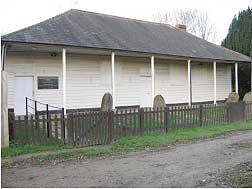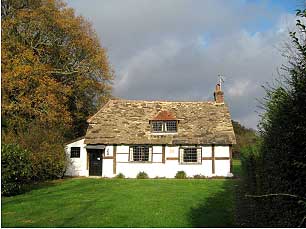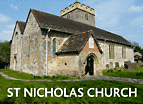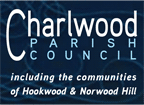Charlwood's rich past...

One of the things that makes living in the parish of Charlwood special is the rich history of the village.
Mesolithic camps have been found dating back to 5000 BC. St Nicholas’ church dates from 1080, only fourteen years after the Norman Conquest. It was extended by the de Gatwyck family in 1280. John de Gatwyck was recorded as going on a crusade in 1311, and some of his descendants still live in the village.
The church, listed grade 1, has exceptionally fine wall paintings, dating from around 1300. The church was extended again in 1480 with the addition of a chantry chapel (now the choir stalls), but remained unchanged until a new extension, built in wealden sandstone, was added in 2009.
Based on the iron industry, the village had a period of prosperity in the Middle Ages. The parish has over eighty listed buildings and features, including twenty eight medieval open hall cottages (built before chimneys), more than in any other Surrey village.
In 2004 some fifteen houses in Hookwood and Charlwood were dated, using new technology, with the oldest (the cottage opposite the Half Moon) found to have been built in 1402.

Providence Chapel (below), (listed grade 2 *) was originally built in Horsham as a barracks to house troops assembled to repel a Napoleonic invasion. It was moved to Charlwood in 1816 as a non-denominational non-conformist chapel.

Much of the history of Charlwood is linked to charcoal. Two ancient woods, Glovers Wood and Edolph’s Copse, with outstanding bluebells in the spring, have been purchased by the Woodland Trust and are open to the public.
In 1846 the village commons were enclosed and new houses built so that many of the ancient cottages are tucked away down side lanes behind the Victorian properties. Four acres in the centre of the village was made into a recreation ground, now known as ‘The Rec.’ Due to strict planning policies most of the parish has not been built up, and retains much of its original rural and agricultural character.
Charlwood parish includes Hookwood, which has its own history.
At Timberham (or Kilmanham) bridge (now within the airport) it was rumoured that the women of Charlwood slaughtered the Danes fleeing after their defeat at the battle of Ockley in 851. Gatwick Manor was one of the two main manor houses in Charlwood and John de Gatewyk is recorded on a deed in 1332. John Jordan became owner of the manor in 1495. William Jordan of Gatwick who died in 1625 is commemorated on a brass plate on the wall of Charlwood church. Soon after, a legal battle erupted between the Jordan family who lived at Gatwick Manor and the Saunders family from Charlwood Place as to who should sit in the special pews in church. In later years part of the land at Gatwick was sold to make a race course, and the Grand National was held there during the First World War. Some more land was sold in 1930 for a private flying club. The present airport was built in 1956-8. The site of Gatwick manor now lies under the North Terminal.

Charlwood parish also used to include the village of Lowfield Heath. A number of historic houses were demolished when the airport was built and, on account of the noise, the whole village of Lowfield Heath was demolished in the late 1970’s, leaving only the church. The Lowfield Heath windmill was re-erected in Charlwood in 1987‑90. The airport and Lowfield Heath used to lie within Charlwood parish but were moved into Crawley in 1974.
Three Parish maps, hanging in the Parish Hall, illustrate the history and inhabitants of the parish. They took six years to complete for the Millennium and involved some 300 residents.
The Parish Council is planning to build a new pavilion on The Rec that will include an archive room. This will enable historic artefacts, from canon balls to gas masks, along with copies of ancient maps, documents and records of people to be safely stored, to be available for anyone who wishes to undertake research, and to be put on display.

Bristow’s Cottage (left), built by the Rector, John Bristow, was the village school from 1620 to 1852 when a new boys’ school and a new girls’ school (now the parish hall) were built. The present school dates from 1913.











